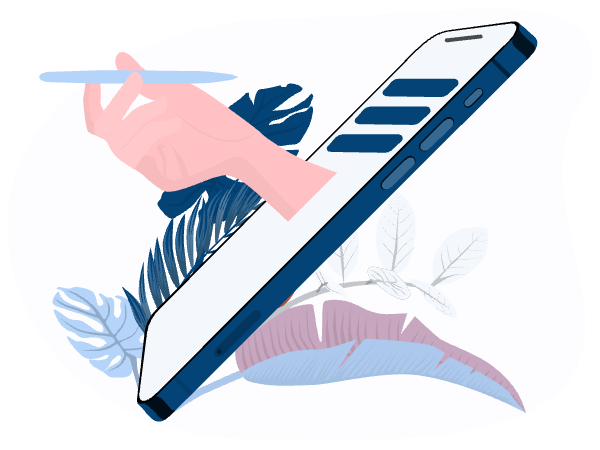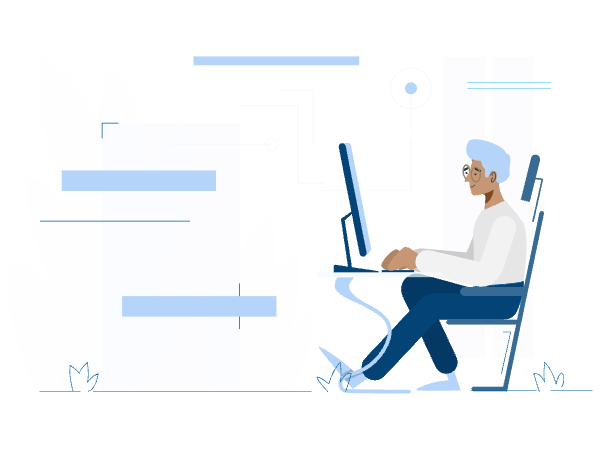We all get the jist of an emergency fund. You put money aside, ideally enough to cover three to six months of expenses, and when an emergency expense pops up, you can use it to stay afloat.
But, at a certain point, you’ll realize something: three to six months of expenses is a pretty hefty sum. Depending on your expenses, you could easily have $32,000 sitting idly in a savings account. And, given the meagre interest rates on most savings accounts, you might get a little greedy and wonder if you could earn more than that .001% APY you have now.
Naturally, a certificate of deposit (CD) emerges as a potential solution. A CD is an FDIC-insured deposit account that gives you a fixed interest rate, one that’s significantly higher than a bank account’s APY, for a specific number of years. The interest rates can be eye-watering, but they come with a catch—you have to lock your money up for your CD’s term. If you withdraw funding early, you’ll pay a penalty.
So, do CD’s make a good emergency fund? At first glance, you might think not. But, before we draw conclusions, let’s dig a little deeper. There might be some argument for storing a portion of your emergency funds in a CD.
How does a CD work?
When you open a CD, your bank will give you a CD term, which is the amount of time you must keep your money in the CD, usually anywhere from a few months to five years. As long as you don’t touch your money, you’ll secure a high interest rate for the life of the CD. Your bank will pay interest monthly or quarterly, and when the CD term has ended (called “maturity”), you can access your money again.
People like CDs not only because the interest rate is higher than savings accounts, but also because it’s fixed. No matter what happens in the larger economy, your CD will always earn at the same rate.
The big problem with CDs, of course, is that you can’t withdraw money during the CD term. If you do, you’ll pay a penalty. The exact amount of your penalty depends on the bank, CD’s interest rate, and the CD term—usually the longer the CD term, the higher the penalty—but you can expect to sacrifice anywhere from a few months to a year of earned interest. Typically the earlier you withdraw from a CD, the more money you lose.
For instance, let’s say your CD charges a penalty that’s worth six months of interest. You have an emergency pop up two months into your term, and you need to withdraw your funds. In this case, you’ll sacrifice two months of paid interest, and you’ll pay the remaining four months of interest from your initial deposit.
Should you keep your emergency fund in a CD?
Short answer: by itself, CDs aren’t the best place to put your emergency fund.
Here’s the thing—you want your emergency fund to be as accessible as possible. That means, you don’t want your emergency savings tied up in investments or locked away in a CD. Though a CD gives you a higher yield rate, it doesn’t give you higher flexibility. And with emergencies, higher flexibility always trumps money earned on interest.
For that reason, you should consider storing all or most of your emergency fund in a high-yield savings account (HYSA). A HYSA will have a much higher interest rate than a traditional savings account, and you’ll have complete access to your money.
Now, of course, HYSAs aren’t a perfect solution, either. Though their interest rates are higher than savings accounts, they’re still typically lower than inflation rates. Historically inflation has been around 2% annually. If your HYSA gives you 1.5% (the pre-pandemic rate most HYSAs had), then inflation would still drag your emergency savings by .5%.
That brings us back to CDs. Some longer term CDs have rates that well outpace inflation. Is there a way to lock in the higher rates of CDs, while also getting the accessibility of a savings account? There might be a way. Let’s take a look.
How can you use a CD as an emergency fund?
One strategy is CD laddering. Basically, with a CD ladder, you own multiple CDs, each with different CD terms. Having multiple terms helps you take advantage of the higher rates on long-term CDs, while also ensuring you don’t lock your emergency savings up for five years.
A CD ladder for an emergency fund could work like this.
First, put aside a hefty portion of your emergency savings in a HYSA
(you definitely don’t want all your emergency savings in a CD). Then, put a portion in a 6-month CD, another portion in a 1-year CD, a third in a 1.5-year CD, and a fourth in a 2-year CD.
Sidenote: you could continue this, putting another portion in a 3-year CD, another in a 4-year CD, and another in a 5-year CD. But keep in mind that the longer the CD term, the less likely you’ll be able to access it in an emergency. For that reason, it’s probably better to stick to 2-year CDs or less.
In six months, here’s what happens: your 2-year CD now has a year and a half until maturity. Your 1.5-year CD has a year. Your 1-year CD matures in 6 months. And your 6-month CD? Well, it’s matured, meaning you can access the cash and the interest you earned. You can deposit the money back into your emergency fund, or you could buy another CD (possibly a 2-year CD to keep the cycle going).
It’s a gamble. You don’t know when an emergency will strike, whether it’s close to a CD’s maturity, or whether the portion in a HYSA will cover the full cost. But, if you don’t lock all your funding in a CD, if you have at least 50% to 75% in liquid cash, CD laddering could help you capitalize on a CD’s higher interest rates and outpace inflation.
Alternatively, you could take out a no-penalty CD. These CDs work exactly like a normal CD, except you won’t pay a penalty to withdraw funding. Of course, there’s a catch with these, too. Your no-penalty CD interest rate will be lower than a normal CD, sometimes even lower than a HYSA, which might not be advantageous for you.
Can you cover a big emergency?
In sum, a CD by itself isn’t a good place to store your emergency fund. You won’t be able to access this cash without paying a penalty, which, depending on the CD you take out, could be hefty. CD laddering, on the other hand, could be a lucrative strategy, so long as you put a hefty portion of your emergency savings in a high-yield savings account.
Now, let’s be real: the problem of “where to put your emergency” isn’t a bad problem to have. In fact, if you have an emergency fund, consider yourself a part of the lucky few. About 60% of Americans can’t cover a $1,000 emergency, which often leads them to borrow from high-interest loans and credit cards.
For those Americans who can’t cover a big emergency—even if you have an emergency fund—we want to give you a safer, more affordable way to borrow: employee loans.
With low-interest and absolutely no hidden fees, our loans are designed to help you cover an emergency without going deep into debt. And, since they’re connected to your employer, you don’t have to worry about missing a payment: repayment comes from payroll, helping you stay on track.
When you need to give your emergency fund a major boost, Stately can help. Take a look at our employee loans, and let’s help you stay afloat in a time of need.



